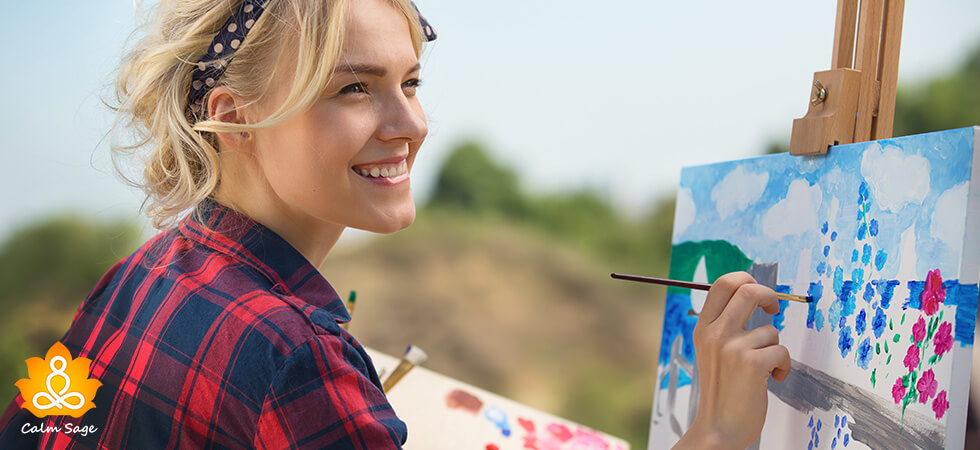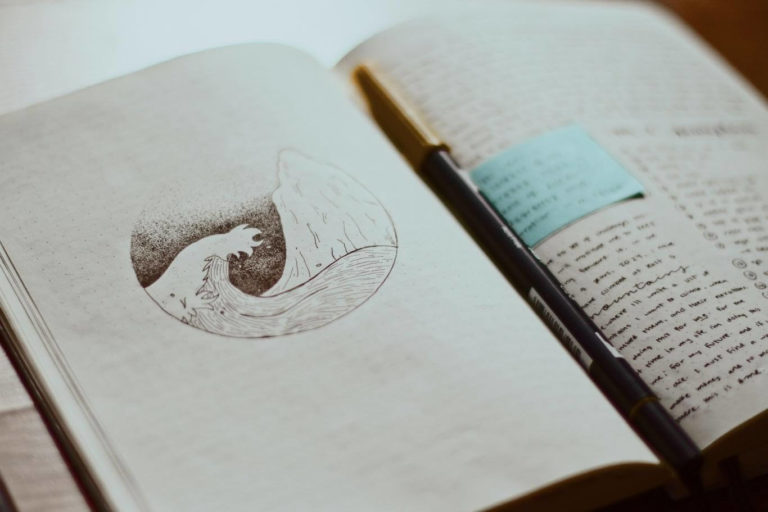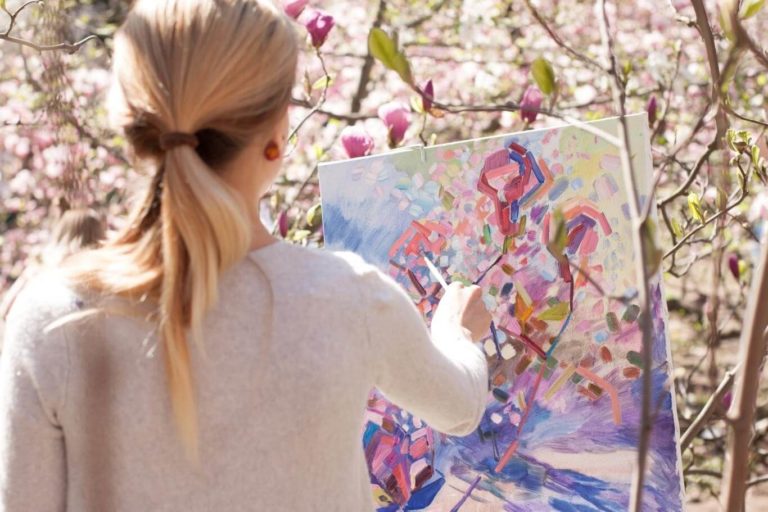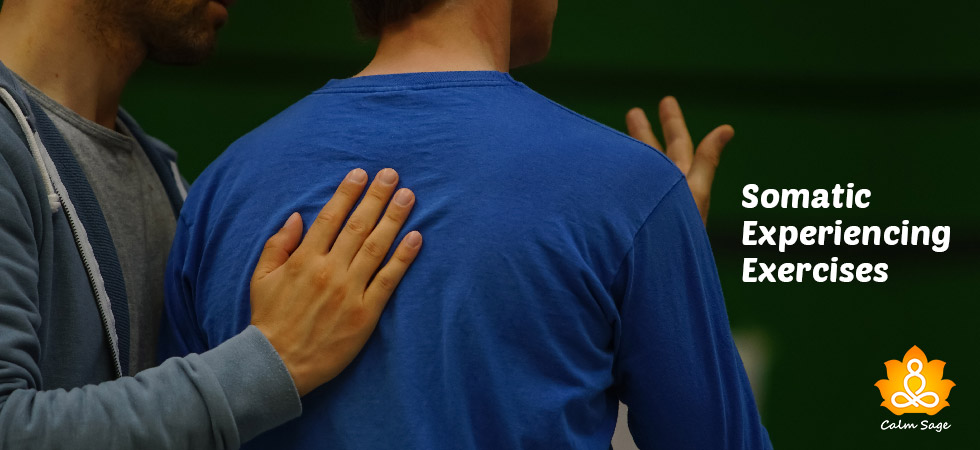Ways Expressive Arts Therapy Heals You

Have you ever thought of painting or dancing when you were too agitated to think clearly? Have you ever thought about diverting your attention to art when you were too anxious to stay still? If you have thought about this or done this, then you might have unconsciously participated in expressive arts therapy.
When any kind of artistic method is used to express your emotions, feelings, thoughts, and even trauma, then it could be called expressive therapy. Art, inadvertently, helps in understanding difficult emotions, thoughts, and feelings, promoting self-awareness, overcoming stress and anxiety, boosting self-confidence, building social connections, and so much more.
If we talk about psychotherapy in general, then artistic forms or expressive arts can be used as a medium to express feelings, communicate, and explore the different sides of a person’s personality.
The best part is that you do not have to be an artistic person to participate in expressive arts therapy! Let’s take a look at what is expressive arts or performing arts therapy, its benefits, techniques, and what to know before you begin.
What Is Expressive Arts Therapy?
There are many types of therapeutic approaches – some are traditional with a structure and some are flexible with no certain structure to them. Expressive arts therapy is an integrative approach to therapy where many forms of art such as writing, performing arts, visual arts, etc. are integrated into the model of therapy to help your mental and emotional growth.
Here, you work alongside a therapist who helps you explore different forms and find the right form of expression or expressive art. Expressive therapy takes you on a journey of self-discovery that ultimately leads to emotional expression.
The focus on the creative process is more than the creative form. Expressive arts therapy can help you learn about yourself and share your innermost thoughts and feelings in a safe and therapeutic environment.

Types Of Expressive Arts Therapy
Many types of expressive arts are integrated into this therapy approach. Some of the major ones can include;
- Art Therapy: Using drawing, painting, sculpting, etc. to express emotions and share thoughts.
- Music Therapy: Listening to or creating music scores to work through distress and even improve mood.
- Writing Therapy: Involves writing as a means of expressing emotions and exploring thoughts or feelings. This can include journaling, writing fiction, poems, etc.
- Dance Movement Therapy or Performing Arts: Here, physical movements via dance or dramatic role-playing are used to help cope with distressing emotions and symptoms of conditions such as anxiety, trauma, stress, and depression.
These therapy types can be used as a single therapeutic intervention. However, expressive therapy is different. In expressive arts therapy, many of these above-mentioned techniques and tools are incorporated, instead of relying on a single model.
Having many different techniques and tools, expressive arts therapy can cater to every individual’s needs while creating an experience that provides you a way to gain a better understanding of yourself – emotions, feelings, thoughts, experiences, and all.
Expressive Arts Therapy Techniques
As mentioned, expressive art therapy incorporates a broad range of techniques to cater to your need. In addition to utilizing the healing properties of creative self-expression through expressive art, therapists can also incorporate psychotherapeutic activities drawing from therapy approaches including psychodynamic, cognitive-behavioral, and mindfulness-based approaches.
The common expressive arts therapy techniques you can see and engage in can include;
- Painting (finger painting, watercolor painting, etc.)
- Drawing or doodling
- Sculpting with clay
- Making puppets or masks
- Dancing
- Journaling
- Writing poems
- Writing songs
- Psychodrama
- Role-playing
- Listening to music
- Collage making
- Drawing self-portraits
- Photography
- Mandala art
Examples of expressive arts therapy ideas
Here are some examples of expressive arts therapy ideas for you;
For emotions, the activities can include;
- Painting (finger painting, drawing, etc.)
- Writing in a journal
- Creating a puppet (sock puppet, finger puppet, etc.)
- Writing a message on a balloon and then setting it free
For relaxation, the activities can include;
- Music therapy
- Doodle drawing
- Mandala art
- Making a zentangle
- Mask making
The goal of every activity is the same: helping to untangle a wide range of social, emotional, and mental issues to gain self-awareness and self-esteem. Expressive arts therapy is beneficial for children, teenagers, and adults with social anxiety, obsessive-compulsive disorder, PTSD, and trauma among other cognitive, and behavioral disorders.
Expressive Arts Therapy Can Help Treat
Expressive arts therapy can be used to treat various behavioral, social, emotional, and mental health disorders and conditions such as;
- ADHD
- Eating disorders
- Post-traumatic stress disorder (PTSD)
- Trauma
- Anxiety disorders
- Social anxiety disorder
- Depression
- Grief
- Chronic illnesses
Expressive arts therapy helps to explore your inner self in the form of various arts. A therapist can help with understanding the right creative process and provide the perfect coping mechanism to help deal with your problems.
This process doesn’t require a background in the arts. Sometimes non-verbal communication can help to express your thoughts and feelings in the right way.
Benefits Of Expressive Arts Therapy
Expressive therapy adds to the many benefits of the traditional therapy approach as it allows you to use techniques that work best according to your needs. For example; If you’re uncomfortable talking about your experiences, then you can indulge in activities such as drawing or sculpting to better understand your experiences and perspective.
Expressive art therapy, when included in a treatment plan can help you;
- Improve creativity
- Embrace imagination
- Give clarity, and
- Heal from within
In many studies over the years, it has been found that expressive therapy can develop a skill set, enhance personal growth, reduce symptoms of many conditions (including depression and cognitive-related disorders), improve communication skills, and even boost imagination.
In a 2019 study, it was observed that cognitive functioning improved in elderly adults with a mild neurocognitive disorder, and in a similar 2016 study, it was noted that hospitalized children expressed more calm and were less stressed after having an expressive arts therapy session.
Moreover, another recent study found that coloring can help reduce anxiety and improve mood in adults while playing or creating music can improve emotional health in older women.
Ways Of Healing With Expressive Art Therapy
1. Creativity
When someone is using expressive arts to express their feelings and emotions, they are likely to wake up their subconscious awareness. Letting go of your emotions through dancing, painting, drama, or even sculpting can release the creativity in you.
A therapist might help you unfold your hidden talent and use it to help you. What you can’t express through words and speech, you can express through the arts hence enhancing your creative process along the way.
2. Communication
Expressive arts therapy can help deepen your communication with your therapist. It gives your therapist insight into what you are feeling. For instance, your choice of color to paint an art piece may provide your therapist with an insight as to what you’re feeling.
For example: if you’re using a red color to paint it might mean an aggressive emotion whereas a yellow color might mean confidence and optimism.

3. Imagination
This form of therapy helps a person to experience something novel and use their imagination to do so. It could be a Eureka! moment for many. Expressive arts therapy can open up a doorway to a different world where expressing emotions can shed a light on your inner self.
This therapy helps to tap into the soul of a person and provides them with a new form of expression.
Things To Know Before Getting Started
If expressive arts therapy sounds like something right up your alley, then here are some things you should know before getting started with it.
- You don’t have to be perfect. Remember, here, the outcome or the result of your art does not matter, what matters is the process of creation and expression.
- Expressive therapy might not be for you especially if you’re skeptical about creative expression. It might not also be for you if you’re struggling with symptoms of psychosis or conditions like schizophrenia.
- Be open to the process. Expressive arts therapy isn’t like going to an art class. The focus isn’t on learning art, but it’s on exploring your emotions through So keep yourself open to the experience.
If you’ve decided to try expressive arts therapy and get started with it, then here are some additional tips for you;
1. Find A Therapist:
You need to find a therapist with the right certification, training, and experience in expressive arts therapy. You can talk to your therapist for a referral, or you can ask a mental healthcare provider for one.
You can also refer to your local therapist directory to connect with one. Remember to ask for their certification, training, and experiences!
2. Does Your Insurance Cover It?
The next thing you need to do is see if your insurance covers expressive arts therapy. The treatment can be covered if it’s included in your psychotherapy treatment plan, but it won’t hurt to check in with your insurance provider.
3. Expect Everything:
During a typical session, your therapist might guide you through the process of exploring your feelings using any of the art forms and types mentioned above. So, expect to try everything – from writing to dancing and from creating music to role-playing.
Writer’s Thoughts
Expressive arts therapy is a creative process that involves expression, visualization, cooperation, and mindfulness. It can be fun and full of self-exploration, so keep an open mind and be ready to try everything to help understand yourself – emotions, personality, and all.
“To be creative means to be in love with life. You can be creative only if you love life enough that you want to enhance its beauty, you want to bring a little more music to it, a little more poetry to it, a little more dance to it.” – Osho
Create what you feel and live life to the fullest!
I hope this article helps you. For more, you can write to us at info@calmsage.com or DM us on social media.
You can also share your thoughts and tips to incorporate expressive arts into your routine with us in the comments below.
Take Care and Stay Positive!





















Expressive arts therapy is basically a multi-modal approach. Nice article and very informative too.
I am sometimes scared to face my own thoughts through drawing or writing but I am sure will try it soon.
performing drama and dancing is the best way to express emotions and feelings
When I'm feeling too agitated and restless, I like to "dance it out". Very informative article. I didn't know the other activities can be a form of therapy.
Is art therapy similar with expressive art therapy?
Hi Amara, thanks for visiting Calmsage. To answer your question: no, expressive arts therapy is not as same as art therapy. Art therapy is more focused on using painting, drawing, etc to heal whereas expressive arts therapy focuses on using performance arts such as writing, dancing, theatre, etc to help heal. I hope this answered your question. For more information, write to us at info@calmsage.com.
Expressing things lighten your heart & make you feel free. Painting and writing are two of the most important artistic things
Surely gonna try this... thanks for sharing
Express the emotions and feelings is very much. Thanks for the amazing article